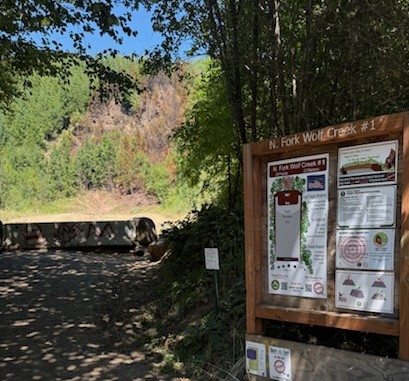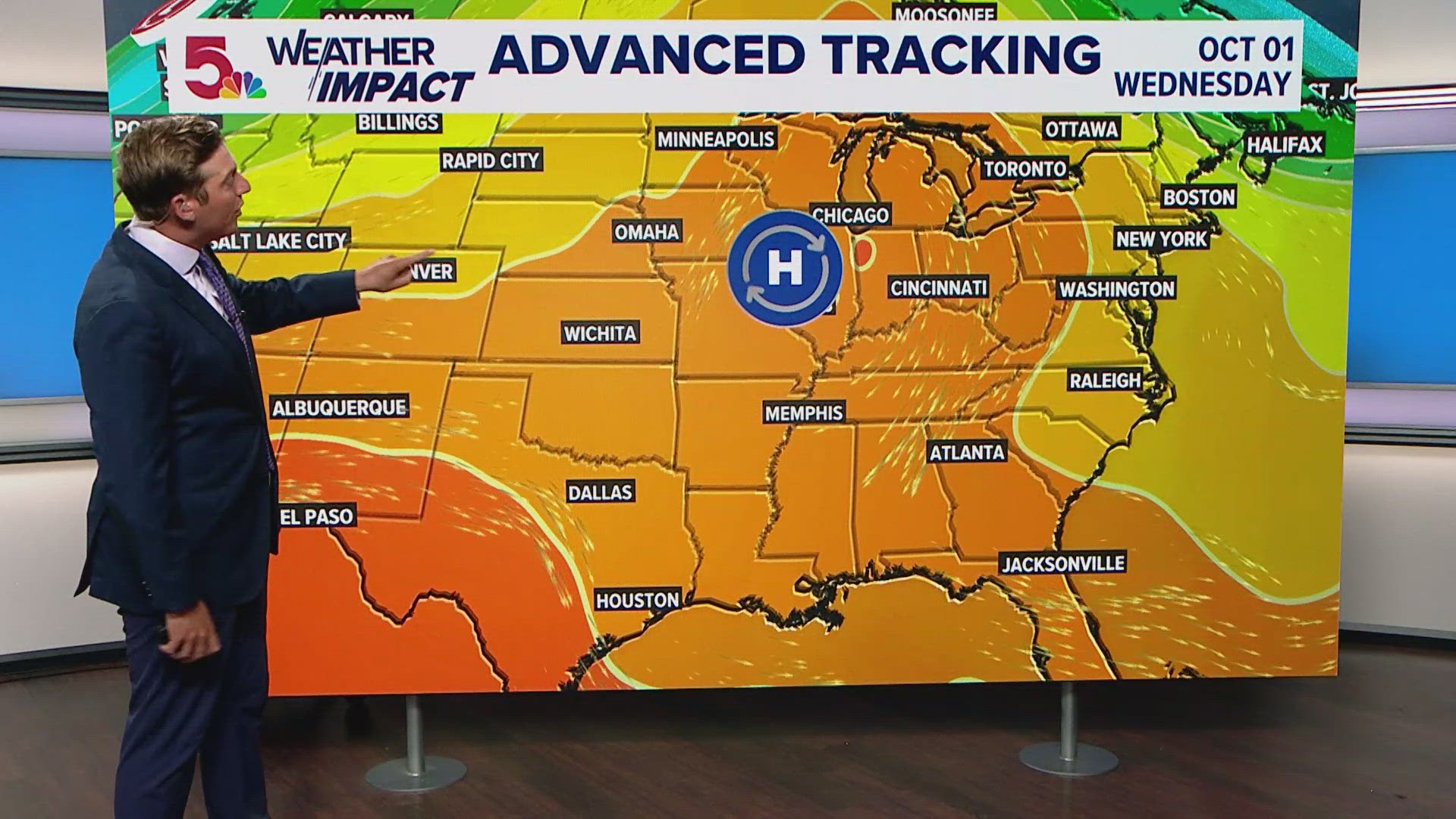Report on the Suspension of Oregon’s Farm Stand Rulemaking and its Alignment with Sustainable Development Goals
Executive Summary
The Oregon Department of Land Conservation and Development (DLCD), at the direction of Governor Tina Kotek, has suspended the rulemaking process concerning farm stand operations. This decision follows significant public comment and stakeholder feedback, reflecting a commitment to balancing economic development with land preservation. This report analyzes the suspension through the framework of the United Nations Sustainable Development Goals (SDGs), highlighting the state’s approach to inclusive governance, economic sustainability, and environmental stewardship.
Institutional Governance and Stakeholder Partnership (SDG 16 & SDG 17)
The decision to pause the rulemaking process exemplifies a commitment to responsive and inclusive governance, a core principle of SDG 16: Peace, Justice and Strong Institutions. By actively responding to public and stakeholder concerns, the state government demonstrates accountability. This action is rooted in the foundational principles of Oregon’s land use planning system.
- Directive for Reassessment: Governor Kotek directed the DLCD to pause the process to allow for more comprehensive dialogue with all interested parties.
- Acknowledgement of Public Comment: Both the DLCD and the Governor’s Office explicitly recognized that the feedback received from Oregonians was clear and necessitated a reassessment of next steps.
- Commitment to Citizen Involvement: The process underscores the importance of Goal 1 (Citizen Involvement) of Oregon’s land use system, ensuring broad community engagement in policy-making.
The collaborative effort involving the DLCD, the Governor’s Office, the Rulemaking Advisory Committee (RAC), and the public serves as a model for SDG 17: Partnerships for the Goals, leveraging multi-stakeholder partnerships to achieve sustainable outcomes.
Economic Sustainability and Agricultural Support (SDG 8 & SDG 2)
The core of the debate centers on the economic viability of farms, directly engaging with SDG 8: Decent Work and Economic Growth. The need for updated rules reflects the evolving business models required for small and midsize farms to remain sustainable, particularly through agri-tourism.
- Governor Kotek reassured farmers that their concerns about the potential business impacts of rule changes have been heard.
- The Governor affirmed that supporting local farm businesses and preserving the state’s land use system can be achieved concurrently.
- A key acknowledgement was made that new models for financial sustainability are necessary for the continuation of valued agricultural operations in Oregon.
By focusing on the financial health of farmers, the state supports the foundation of the local food system, which is critical for achieving SDG 2: Zero Hunger through the promotion of sustainable agriculture.
Land Use, Community, and Environmental Stewardship (SDG 11, SDG 12 & SDG 15)
The discussion around farm stand regulations is intrinsically linked to Oregon’s historic land use system, which aligns with several environmental and community-focused SDGs. The effort to balance agricultural commerce with land preservation is a direct application of the principles within SDG 11: Sustainable Cities and Communities, particularly its focus on protecting rural landscapes and strengthening urban-rural linkages.
Furthermore, the promotion of farm stands supports SDG 12: Responsible Consumption and Production by fostering local food systems and shortening supply chains. The preservation of agricultural land itself is a key component of SDG 15: Life on Land.
- Shared Values: The process has highlighted values shared across the state, including supporting the agricultural economy and maintaining opportunities for the public to learn about farming.
- Invaluable Guidance: The Rulemaking Advisory Committee has provided crucial concepts that will inform any future formal rulemaking.
- Balancing Priorities: The central challenge is to accommodate new agri-tourism models without creating unintended consequences for the state’s protected agricultural lands.
Conclusion and Path Forward
The suspension of the farm stand rulemaking is a strategic pause intended to foster deeper dialogue and build a broader consensus. The path forward will involve a multi-stakeholder approach aimed at developing a solution that integrates economic, social, and environmental objectives. This aligns with a holistic vision of sustainable development, seeking to create policy that simultaneously advances economic vitality (SDG 8), promotes sustainable communities (SDG 11), and is guided by inclusive institutions (SDG 16).
Analysis of SDGs, Targets, and Indicators
1. Which SDGs are addressed or connected to the issues highlighted in the article?
-
SDG 2: Zero Hunger
The article’s focus on supporting farmers, the agricultural economy, and small to midsize farms directly relates to ensuring sustainable food production and supporting small-scale food producers.
-
SDG 8: Decent Work and Economic Growth
The discussion revolves around the “financial sustainability” of farms, new “business models,” and the “agri-tourism issue.” This connects to promoting sustainable tourism and supporting local economies and businesses.
-
SDG 11: Sustainable Cities and Communities
The article is centered on the Department of Land Conservation and Development (DLCD) and its role in Oregon’s “comprehensive land use planning system.” This aligns with strengthening national and regional development planning to manage the links between rural and other areas.
-
SDG 16: Peace, Justice and Strong Institutions
The article emphasizes the importance of public participation in governance. The pausing of the rulemaking process to allow for “public comment,” “dialogue,” and “conversations with all interested parties” directly reflects the principles of inclusive and participatory decision-making.
2. What specific targets under those SDGs can be identified based on the article’s content?
-
Target 2.3 (under SDG 2)
“By 2030, double the agricultural productivity and incomes of small-scale food producers…” The article addresses this by highlighting the need to support “small and midsize farms” and help them find “new models for financial sustainability” to ensure their businesses can continue.
-
Target 8.9 (under SDG 8)
“By 2030, devise and implement policies to promote sustainable tourism that creates jobs and promotes local culture and products.” Governor Kotek explicitly frames the issue as an “important agri-tourism issue.” The debate over farm stand rules is a debate over a policy that affects tourism based on local agricultural products.
-
Target 11.a (under SDG 11)
“Support positive economic, social and environmental links between urban, peri-urban and rural areas by strengthening national and regional development planning.” The entire context of the article, involving the state-level DLCD managing a “comprehensive land use planning system” that affects rural farm operations, is an example of this target in action.
-
Target 16.7 (under SDG 16)
“Ensure responsive, inclusive, participatory and representative decision-making at all levels.” The article is a clear example of this target. The DLCD paused the rulemaking “at Governor Kotek’s direction” because the “comments DLCD and the Governor’s Office have received are clear.” The process was halted to “allow for more conversations with all interested parties and the public,” directly reflecting a commitment to participatory decision-making.
3. Are there any indicators mentioned or implied in the article that can be used to measure progress towards the identified targets?
-
Indicators for Target 2.3 & 8.9
The article implies progress can be measured by the financial health and operational status of farms. Implied indicators include the number of viable small and midsize farms, the financial sustainability of farm businesses, and the successful operation of farm stands as part of an agri-tourism model.
-
Indicators for Target 11.a
The existence and function of the planning system itself is an indicator. The article mentions the “Farm Stand Rulemaking process” and Oregon’s “comprehensive land use planning system” as concrete examples of active regional development planning.
-
Indicators for Target 16.7
The article explicitly mentions several indicators of participatory decision-making:
- The process for “public comment” on proposed rules.
- The existence and input of a “Rulemaking Advisory Committee (RAC).”
- The government’s responsiveness to public feedback, as shown by the statement: “The comments DLCD and the Governor’s Office have received are clear.”
- The commitment to hold “more conversations with all interested parties and the public.”
4. Table of SDGs, Targets, and Indicators
| SDGs | Targets | Indicators |
|---|---|---|
| SDG 2: Zero Hunger | Target 2.3: Double the agricultural productivity and incomes of small-scale food producers. | (Implied) Financial sustainability and viability of small and midsize farms. |
| SDG 8: Decent Work and Economic Growth | Target 8.9: Devise and implement policies to promote sustainable tourism that creates jobs and promotes local culture and products. | (Mentioned) Development of policies for agri-tourism (the “Farm Stand Rulemaking process”). |
| SDG 11: Sustainable Cities and Communities | Target 11.a: Support positive economic, social and environmental links… by strengthening national and regional development planning. | (Mentioned) Existence and operation of a comprehensive land use planning system. |
| SDG 16: Peace, Justice and Strong Institutions | Target 16.7: Ensure responsive, inclusive, participatory and representative decision-making at all levels. | (Mentioned) Use of public comment periods, advisory committees (RAC), and holding public dialogues and conversations. |
Source: tillamookcountypioneer.net







